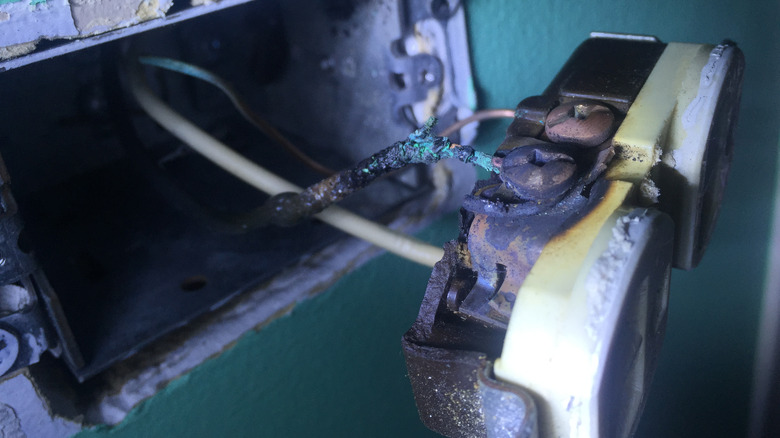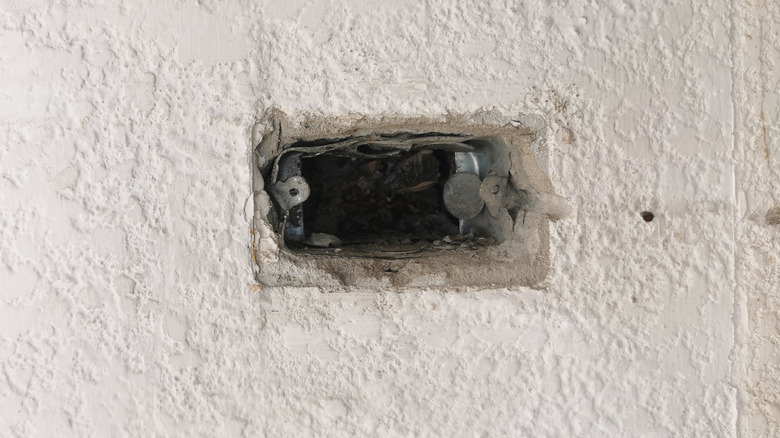The DIY Electrical Mistake That Can Burn Down Your Home
You might know the feeling. You plug in an electrical cord and the receptacle moves just a bit more than seems good and proper. How scared should you be?
A receptacle that is spongy or that slips around when you try to connect a plug to it is unnerving, and for good reason. Loose receptacles and electrical boxes can be dangerous and while they can be caused by age, faulty wiring of an outlet, or rough handling, the most common cause is probably insufficiently tightening the receptacle or electrical box fasteners... sometimes on purpose. The trouble is that movement in an electrical box can result in electrical connections that also work themselves loose over time, and that looseness can result in arcing, overheating, and fire.
Occasionally you might encounter a receptacle with blade slots that are loose, so that most electrical cords plugged into them are loose from the start. These loose connections are particularly dangerous. They're usually a product of work contacts, but no matter the cause, the very fact of the looseness is a fire hazard. The proper course of action in this case is to replace the receptacle itself (thought you might want to replace it anyway, if the outlet is old and unsightly). More commonly, though, the culprit is a loose screw, a receptacle that isn't attached to your drywall, or an electrical box that isn't properly attached to a wall stud. Often, an overly recessed electrical box — perhaps one left in place after paneling was installed – will prompt an installer to leave the receptacle mounting screws loose, so the outlets don't appear sunken. There are better, safer approaches to solving this problem.
The many solutions to loose receptacles
You might have noticed that the home improvement marketplace is fond of solving a problem as many times as it can get away with, and the various solutions to the loose receptacle problem illustrate this clearly. Your first course of action should be to tighten screws – the wall plate screws, though they aren't likely to be the problem, and the mounting screws that attach the receptacle to the electrical box.
If this results in a sunken receptacle that shows gaps between the wall plate and outlets, you can try spacers, and there are several types available. The simplest are C-shaped plastic bits that slip between your electrical box and device. These fold into 1/8-inch increments, but there are also cut-to-length tubular plastic spacers that can fill quite large gaps. However, note that any electrical box recessed more than ¼-inch should be fitted with an electrical box extender rather than spacers, per code.
If your electrical box itself is loose within the wall, you have a couple of options. The first is to use a wall plate spacer that basically clamps the electrical box to your drywall to prevent unwanted movement. In some cases, you might need to replace the box itself with one that can be installed more securely — like an old work or remodel box with either swing clamps to attach the box to drywall or angled screws inside to affix the box firmly to a wall stud. No matter what, if you have this problem, get it fixed: The 51,000 home electrical fires per year have an annual death toll of 500.

